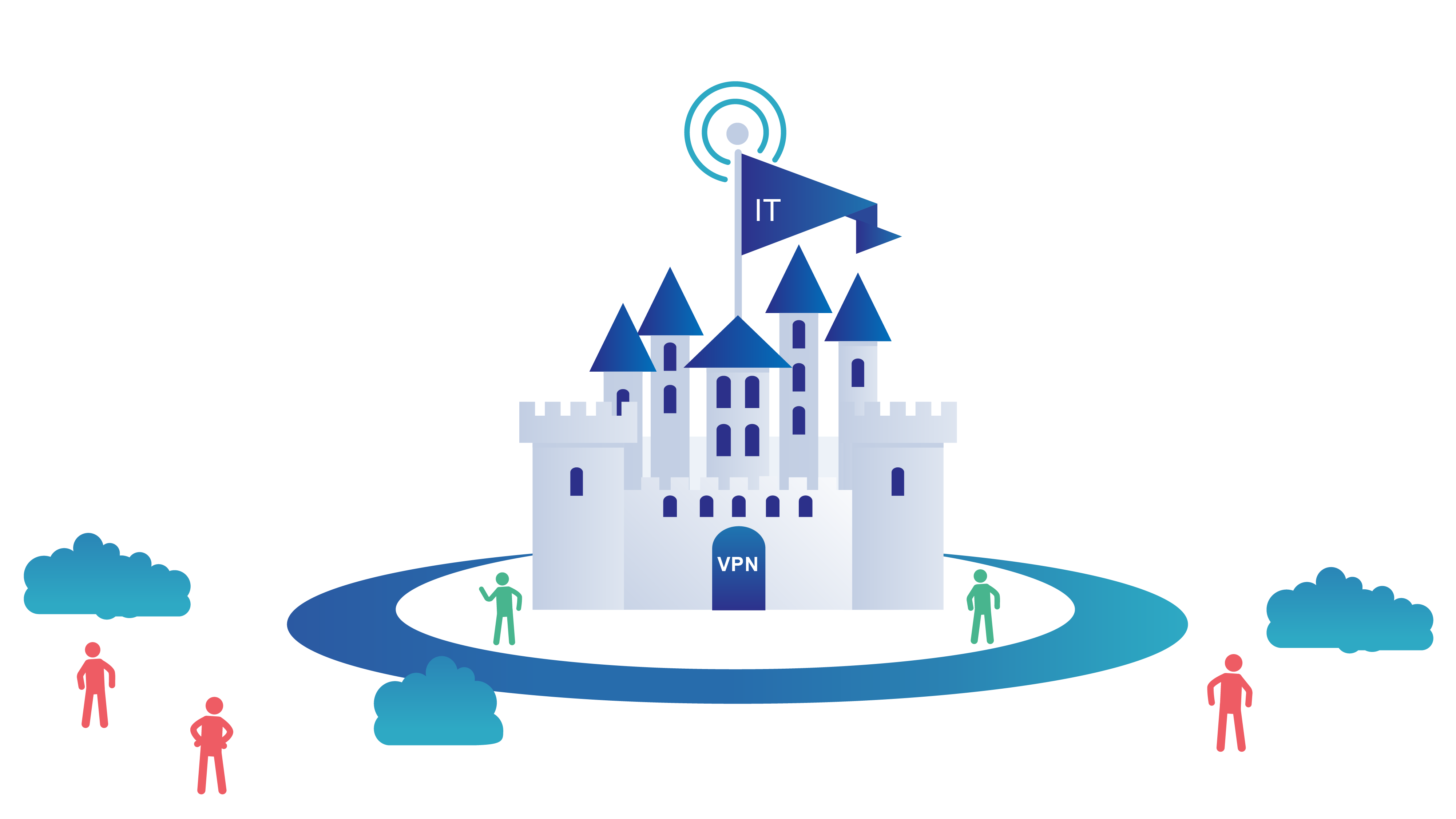After the coronavirus outbreak, remote and hybrid work models began to be a good option for both employers and employees. And with the increasing number of remote workers, cloud systems and their protection have become more important than ever.
To protect a company’s sensitive data or secure the employees’ cloud access, companies started implementing different cybersecurity solutions like Zero Trust. It is one of the most common security models. The reason behind this is actually pretty simple; Security. In this article, we will talk about how to secure cloud systems with Zero Trust and take a look at how it works.
What is Zero Trust?
Before we start with how can you secure your cloud access, let’s briefly explain what is Zero Trust. Zero Trust is a security framework that denies access to data and applications by default. Threat prevention is accomplished by only giving access to networks and workloads to users and their associated devices based on policy informed by continuous, contextual, risk-based verification. All entities are untrusted by default, least privilege access is enforced, and complete security monitoring is established, according to the Zero Trust approach.
Traditional security approaches depend on the antiquated idea that everything inside an organization’s network should be implicitly trusted, which led to the creation of Zero Trust. Due to a lack of granular security restrictions, users – including threat actors and malevolent insiders – are free to move laterally and access or exfiltrate critical data once on the network.
How does Zero Trust work?
A zero trust architecture is a wide framework that ensures that an organization’s most precious assets are effectively protected. It operates on the assumption that every connection and endpoint is a potential danger. Even for those connections that are already inside, the framework defends against these dangers, whether external or internal.
This helps companies to use Zero Trust for cloud security by logging and inspecting all corporate network traffic. This model limits and controls access to the network. It also verifies and secures network resources. To summarize, the Zero Trust security paradigm guarantees that data and resources are unreachable by default. Users can only have restricted access to them under certain conditions, known as least privilege access.
It guarantees that the interaction complies with the organization’s security policy’ conditional criteria. A Zero Trust security approach also uses context from as many data sources as possible to verify and approve every device, network activity, and connection based on dynamic policies.
Technologies Behind Zero Trust
User authentication and access management are two aspects of a Zero Trust security strategy for regulating user access. The aim behind a Zero Trust architecture is to enforce stronger user identity authentication. Because role-based access controls are linked to user identification, thoroughly verifying a user’s identity is critical.
The right to utilize the requested resource must be confirmed once a user’s identity has been validated. This entails making sure that access controls can’t be circumvented, allowing unauthorized access to a resource. Several technologies are required to implement a zero-trust system:
- Zero Trust Network Access — ZTNA: The use of ZTNA technology allows for continuous monitoring and implementation of Zero Trust principles for remote access.
- Multi-factor Authentication — MFA: To greatly increase user identity assurance, secure user authentication in a Zero Trust process necessitates the usage of MFA.
- Identity and Access Management — IAM: In a Zero Trust approach, IAM solutions decide whether to grant or refuse an access request.
- Endpoint Protection: Endpoint security is essential for preventing account compromise.
- Micro-Segmentation: Internal network segmentation is critical for an organization’s network security.
- Visibility and Analytics: A zero trust architecture includes components that continuously monitor user behavior, evaluate login activities, and compare logs for evidence of intrusion.
- User Authentication: The aim behind a Zero Trust architecture is to enforce stronger user identity authentication.
- Access Management: The permissions to utilize the requested resource must be confirmed after a user’s identification has been validated.
Implementing Zero Trust in Cloud
To adopt a zero-trust strategy, you’ll need a security platform that provides full visibility as well as the capacity to gather and correlate data across different physical locations. When you use point products throughout your cloud environment, you get segregated, blocked perspectives, making it difficult to know what’s going on with who and where.
You may handle the following cloud security issues by leveraging the correct platform that is aligned with Zero Trust.
- Governance and Audit: You must examine if each environment is compliant, understand how to create security baselines, and prepare for security audits. You may confirm your assumptions about cloud governance by carefully preserving and examining logs and records of who accesses what resources and how they acquire access.
- Threats to Information Security: Zero trust is built on the foundation of identity management. Security teams can identify who or what is there and what resources are being utilized by following the zero-trust principle of “never trust, always verify.”
- Performance and Capacity Management – Monitoring: Zero trust ensures that capacity and performance are constantly monitored; if there is an unusual rise in usage, security teams are notified to examine further.
What Role Does Zero Trust Play in Cloud Security?
The Zero Trust security architecture enables network traffic monitoring and restriction, as well as safeguarding credentials through layered and protected authentication, by checking and authenticating each and every user. Devices are password-protected, and only authorized individuals have access to them.
Furthermore, establishing Zero Trust security with cloud-based architecture is more cost-effective and versatile for businesses of any size or type. IT departments can benefit from better security without sacrificing the convenience of use by eliminating the costs of on-premise hardware and extensive integration.
Final Words
With careful design and implementation of Zero Trust technology, any organization can make the cloud more manageable. The use of ZTNA, IAM, and MFA can help to prevent undesirable events. With the increasing usage of cloud services, secure access and data protection have great importance. The Zero Trust approach can offer comprehensive security and cost-effective solutions to companies for cyber security threats.




